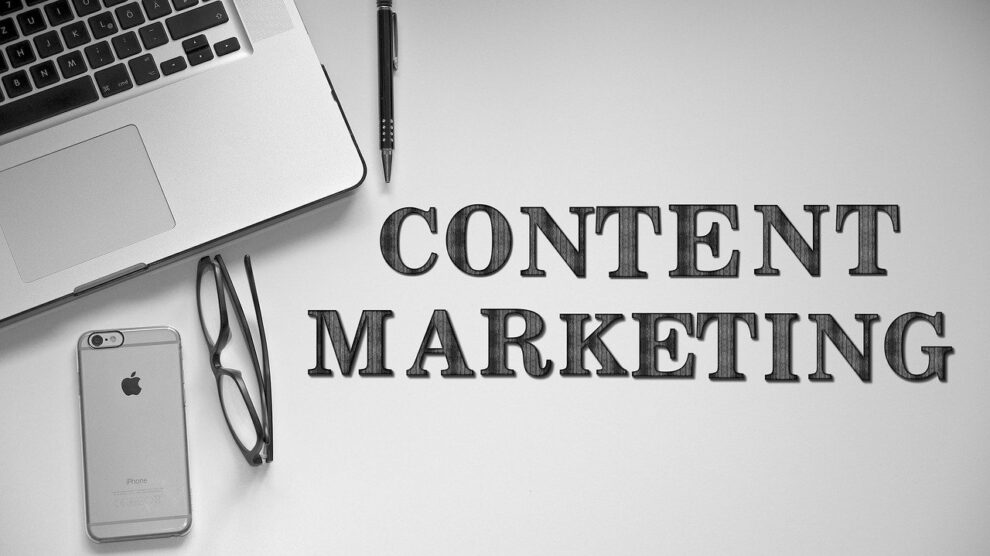First impressions are important.
When you arrive on a website, you form judgments in a microsecond about credibility, user-friendliness and appeal.
As a content marketer, you work very hard on creating great content that informs and enthralls your customers. But all that might be wasted if the website where that content is housed is designed poorly.
If you’re not investing in web design, then you’re killing your own content marketing.
In this post, let’s see why web design is critical to the success of your content marketing.
Why Website Design Matters More Than You Think
Here’s a shocking stat:
46.1% of people rate a website’s quality by the general appearance.
So close to half of your customers are instantly judging your credibility from your website alone.
And it makes sense…
When you see a website that is outdated or poorly put together, the less trust you have in its owner.
On the other hand, a site with a good solid layout is an excellent first impression that builds trust.
This “credibility by design” principle is hugely important for content marketing.
Smart design makes your brand appear knowledgeable and trusted to users, so that visitors are more likely to stick around and read.
Bottom line?
The web design decides if the visitor will view your sales copy.
Crafting a User Experience That Supports Your Content
Now more than ever, web design is all about crafting delightful user experiences.
Your website visitors want their needs to be intuitively understood and fulfilled through seamless interactions.
So, carefully designed UX removes friction and takes you on a path to get what you’re looking for with as little effort as possible.
This directly helps content marketing to perform in a number of ways:
1. Less Bounce, More Browse
If the visitor experiences a simple, enjoyable user experience on your website, then they stay.
By contrast, an uninspiring or frustrating UX creates that feared “bounce” when your visitor immediately bounces off your website.
Good web design increases the user experience, reducing bounce rates. That means more traffic viewing and sharing your content.
2. Sales Funnel Navigation
Your website is where leads go through your sales funnel with content.
This process is eased by good web design with the navigation, CTA’s and easy navigation between pages.
This step moves people through the funnel phases, and then prepares them for a conversion once they’ve read something useful.
3. Content Discoverability
If you can’t be found by your website visitors, you may as well never created content.
Website design plays a big part in finding and getting.
Navigation design and a good site search make it possible for visitors to find your content and enjoy it.
Web Design Makes SEO Efforts Work for Your Content
SEO and content marketing are two different beasts.
You want your content to get on the first page of Google, draw in a good number of visitors who will convert.
You are a web designer, you might ask yourself: “How is SEO related to my job?
Quite a lot, actually!
Not only do your content and backlink profile affect rankings, but the site speed and mobile optimization also affect search engines.
Here are some of the web design factors that influence SEO:
- Website Speed: A lower load time is linked to better rankings. Fast sites help the user experience.
- Mobile-Optimization: Google likes responsive, mobile-friendly websites. Your interface has to work on mobile devices.
- Keyword insertion: Sneaky keyword usage in headers, image titles, etc. can boost rankings. But don’t over-optimize!
- Easy Navigation: Having good navigation in place is helpful for crawling by search engines.
- High Quality Backlinks: A well-designed, interesting site translates into more backlinks which means organic growth.
- Schema Markup: Add schema markup to your HTML to let the search engines figure out what you’re saying.
A good looking website will make search engines easily see, crawl and index your material – driving more traffic to your best content.
Make Accessible Content More Accessible
Accessibility best practices improve all users’ experiences. Here are some examples:
- Alt text to images helps screen readers, but works for anyone on a slow connection that didn’t load images all the way.
- Headings, lists, and text structure are what scan content for cognitively impaired users but allow everyone else to easily skim.
- Good enough contrast to not only accommodate low-vision users, but is more easily read by all.
- Keyboard compatibility helps people who don’t have a mouse but also lets everyone navigate by using keyboard shortcuts.
When you scale for accessibility, you cater to people of all levels and optimize for general user experience.
This works for your content marketing, because more accessible sites increase:
- Visitor: You reach out to more visitors.
- Activity: They stay longer on the content because of better UX.
- Conversions: More leads convert after they have read and have liked your content.
Being accessible when designing is morally right and pragmatically wise.
Essential Web Design Tips to Boost Your Content Results
Having talked about the bigger picture, let’s dive into real-world web design strategies that will enhance your content marketing results:
Guide Users with Intuitive Navigation
You navigation structure is important to take visitors to the most relevant pages and content on your website.
Include:
- Optimal well-branded main menu with direct links to content hubs.
- Consistent second page arrow on long pages.
- Navigation bars on phones.
- Intext links in copy directing users to associated content.
- Search & Sitemaps for discoverability and website.
Content Should Be Extremely Easy to Find
There should be a minimum of work involved to search for material.
Optimizing “findability” might involve:
- Categories/tags to filter content.
- Autocomplete in search when users press enter.
- Predictive text search to suggest articles.
Use Visual Hierarchy Principles
Apply basic design principles to create visual hierarchy that’s easy to scan. For example:
- Contrast: Position key content differently.
- Repetition: Repeat visual cues to get it consistent.
- Balance: Be sanitized and ordered.
- Neighborhood: Separate related things into similar ones.
Precise CTA positioning
Calls to action should be prominently displayed and located so visitors can opt in.
For example:
- Sidebar/Sticky bar Signup CTAs.
- Inserting related resource CTAs in blog articles.
- Place contact CTAs at the bottom of page landing pages.
Make Mobile Optimization Non-Negotiable
Because more search traffic is being sourced from mobile devices, mobile-friendly responsive design is a no-brainer.
- Responsive frameworks such as Bootstrap.
- Beware of black boxes that hurt mobile UX, such as annoying Interstitial ads.
- Multiple devices for usability pain points.
Choose Brand-Reinforcing Visuals
Images, videos, Illustrations, Colors and fonts should further your brand and narrative.
Never settle for stock-like images and go for deliberate designs such as:
- On-brand photos reflecting your style and beliefs.
- Illustrations with your voice and subject matter in mind.
- Fonts aligned with your brand voice.
- Color scheme that is based on your logo color schemes.
Determine the Best Mix of Text & Negative Space
Too much information in too many places is inexhaustible. Take care with information density and space.
Optimally re-balance text and negative space by:
- Splitting up information into smaller paragraphs.
- A lot of headings and lists to chunk text.
- With carefully placed photographs and charts.
- Allowing a lot of white space in between.
Final Thoughts
Apply these concepts to create site experiences that enchant your visitors and drive your marketing ROI.
The possibilities are immense when content and design go hand in hand. Don’t put the brakes on your success with a lack of design. Now is the time to make your content be the best it can be!





